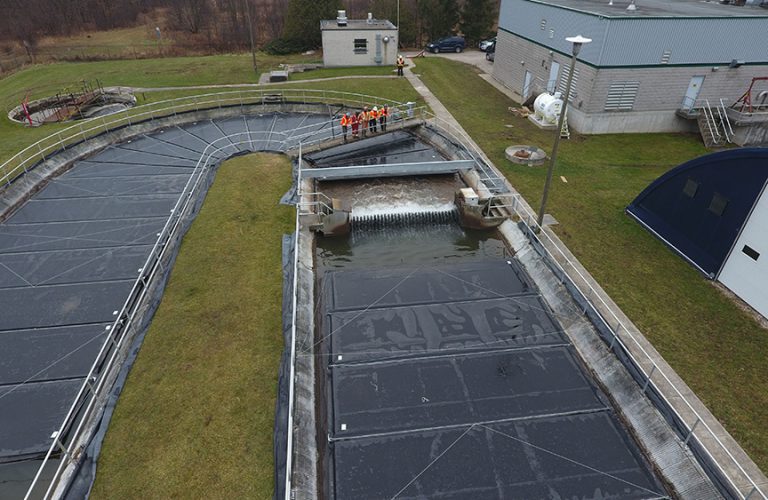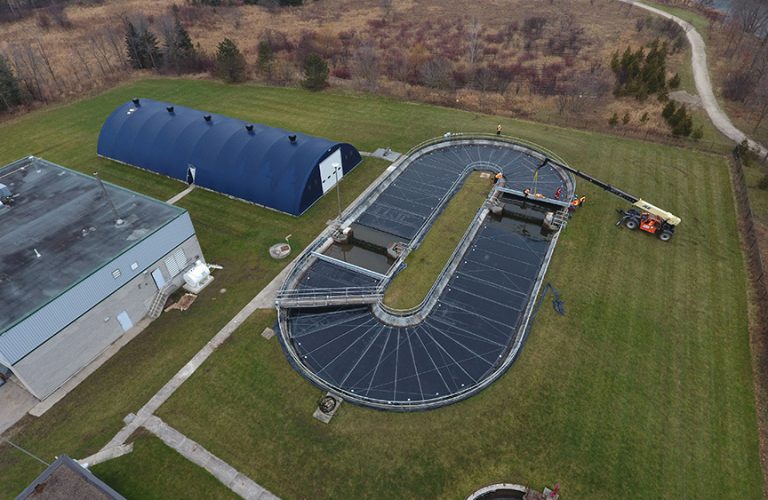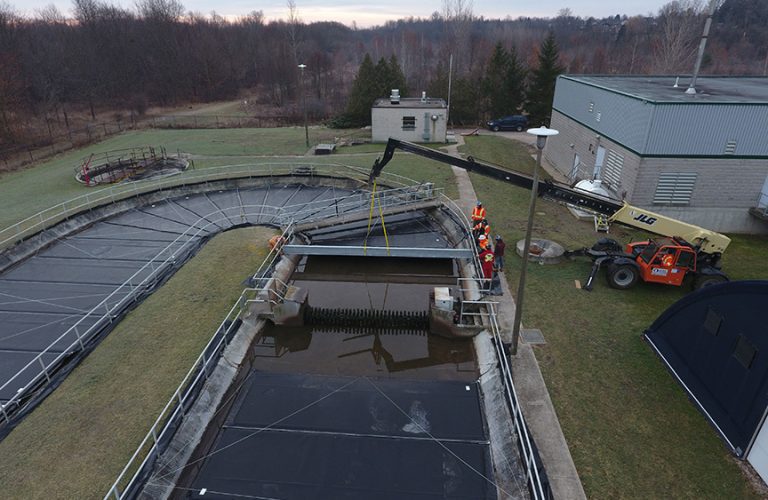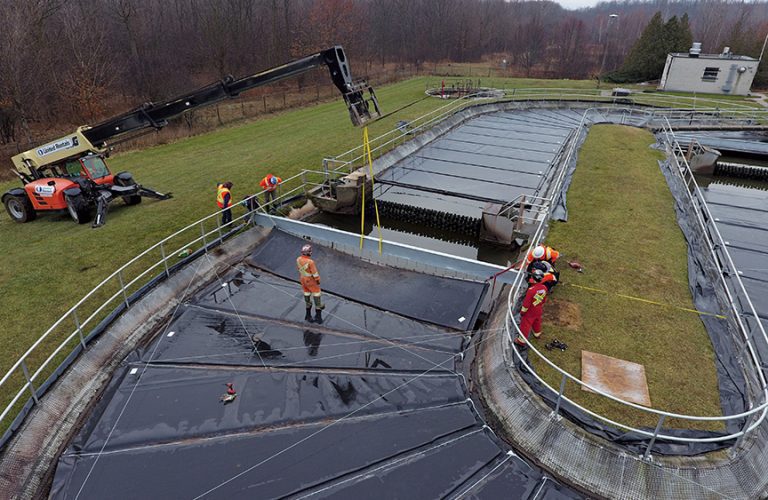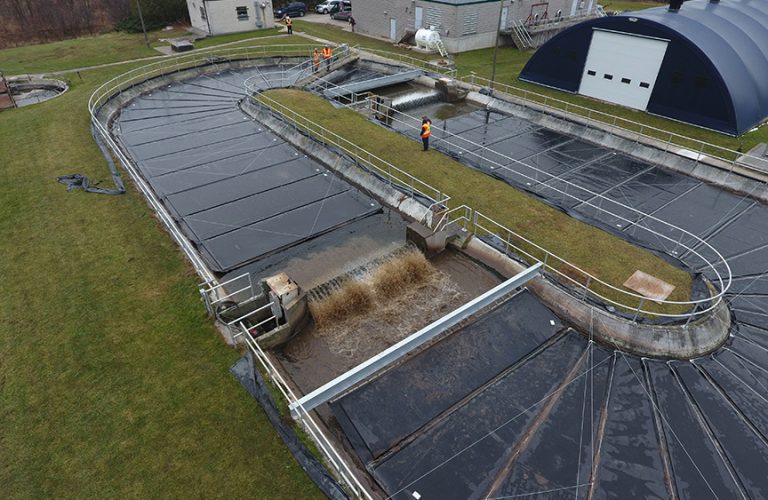PROJECT SUMMARY AND CONCERNS
The St. Jacobs Water Pollution Control Plant was built in Ontario in 1971 to process commercial and residential wastewater. As a result of increased demands on the 430m3/day facility, upgrades were necessary to run as efficiently as possible with minimal downtime. During the winter, the aeration rollers within the oxidization tank would occasionally freeze up. The freeze-up would force the operator of the facility to shut down the tank and manually clear the ice from the rollers, resulting inconsiderable loss of productivity within the tank. Layfield was contacted by the operator Ontario Clean Water Agency, for a Modular Insulated Cover to minimize the heat loss from above the tank and roller freeze-up.
SOLUTION
Layfield proposed installing a prefabricated modular insulated floating cover (MIC) system in the tank. The goal was to reduce the heat loss within the tank and provide a more consistent, predictable environment for the bacteria. The insulated cover consisted of 22 prefabricated MIC panels in rectangle and pie shape configurations that would provide an R16 layer of insulation over the tank. Each MIC panel was fabricated at Layfield’s facility with 100mm thick closed-cell foam encapsulated with Layfield’s Enviro Liner® 6060 geomembrane – a fortified geomembrane manufactured with prime grade resins, UV stabilizer, and an antioxidant package to deliver a reliable solution with a 20-year pro-rated weathering warranty.
Modular Insulated Cover INSTALLATION
The prefabricated modular approach made the installation very efficient, taking approximately three days to install the panels while the plant was kept in operation during the cover installation. Each lightweight panel was floated onto the tank and secured to the concrete tank’s wall using stainless eye bolts and lacing wire to prevent panel shift and wind uplift.
RESULT
Almost immediately after the installation, the installers and operators observed a noticeable reduction in odors. The odor reduction was attributed to the reduced exposed surface area of the treatment plant. This was an unexpected benefit to neighboring residents and users of a recreational trail nearby. During the winter operation, the cover performed as expected. The tank’s temperature operated at approximately 5°C warmer than the previous winters, eliminating roller freeze-up and shutdown. It was also noted that the microbes within the treatment process performed better at the warmer temperature and required less chemical conditioning, which resulted in a more consistent and efficient operation.
